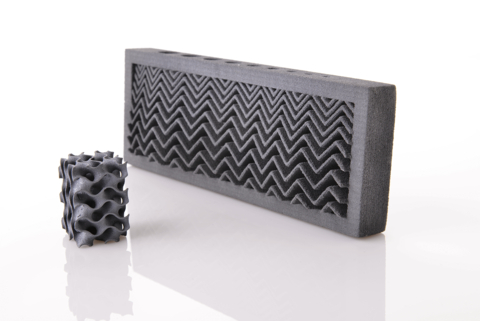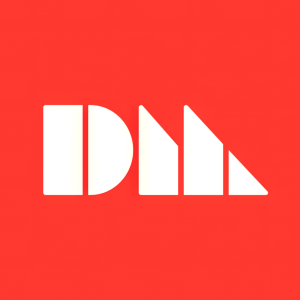Desktop Metal Intensifies Focus on Technical Ceramic Offerings Across Portfolio of Binder Jet Systems
- Increased demand for mass production of ceramics with binder jet is being driven by applications in aerospace, automotive, energy, consumer electronics, and subtractive manufacturing
-
Customers worldwide are currently 3D printing technical ceramics for commercial applications on
Desktop Metal binder jet platforms at high volumes and for large parts as long as 800 mm in size -
Binder jetting simplifies production for ceramics and cermets that are challenging to fabricate with traditional manufacturing, such as silicon carbide (SiC),
Carbon (C), and tungsten carbide cobalt (WC-Co) - Manufacturers now have the ability to fabricate large complex ceramic designs quickly from low to high mass production volumes — eliminating molds, matrices, and other more expensive manufacturing requirements

This heat exchanger and gyroid, both made of reaction-bonded silicon carbide, were binder jet 3D printed on a Desktop Metal X-Series system.
“Every day,
The broad flexibility of binder jet 3D printing is ideal for rapidly fabricating technical ceramic powders into complex geometries in any volume, from small batch runs to volume production. Additionally, binder jetting’s ability to tightly control the structure of ceramic designs, from porous possibilities to full density, also enables a wide range of post-processing techniques that are highly desirable in ceramic production.
For example, customers worldwide are now producing silicon carbide parts and products in a multitude of ways with
- SiC, reaction bonded (RBSiC)
- SiC, vapor deposition (PVD or CVI)
- SiC, liquid metal infiltrated (SiSiC or AlSiC)
- SiC, bonded (with materials such as nitride or mullite, usually for enhancement of properties)
-
SiC, fully sintered (liquid phase sintering aid additions such as alumina or yttria are most common, while
carbon and boron carbide may also be used)
Flexible Binder Jetting Systems
Worldwide, customers are now using more than five sand and metal models of
When it comes to ceramics, which are often used for the most advanced technology applications,
A new brochure highlighting Desktop Metal’s offerings and customer case studies in ceramics is now available at TeamDM.com/ceramics. Customers interested in discussing ceramics projects with a
About
Forward-Looking Statements
This press release contains certain forward-looking statements within the meaning of the federal securities laws. Forward-looking statements generally are identified by the words “believe,” “project,” “expect,” “anticipate,” “estimate,” “intend,” “strategy,” “future,” “opportunity,” “plan,” “may,” “should,” “will,” “would,” “will be,” “will continue,” “will likely result,” and similar expressions. Forward-looking statements are predictions, projections and other statements about future events that are based on current expectations and assumptions and, as a result, are subject to risks and uncertainties. Many factors could cause actual future events to differ materially from the forward-looking statements in this document, including but not limited to the risks and uncertainties set forth in
View source version on businesswire.com: https://www.businesswire.com/news/home/20230404005425/en/
Media Relations:
sarahwebster@desktopmetal.com
(313) 715-6988
Investor Relations:
jaygentzkow@desktopmetal.com
(781) 730-2110
Source:








